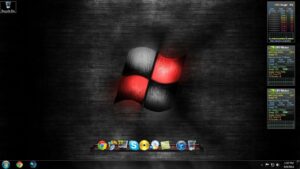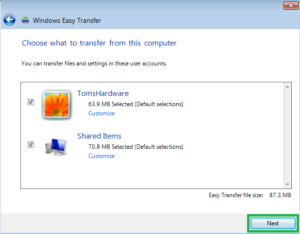Decoding Efficiency: A Comprehensive Guide to the Windows 7 Start Menu

Introduction
In the intricate tapestry of Windows 7, the Start menu emerges as the epicenter of user interaction, providing a gateway to a myriad of applications, settings, and essential functionalities. This exhaustive exploration aims to dissect the various facets of the Windows 7 Start menu, unraveling its evolution, customization options, and the profound impact it has had on user experience since its inception.
1. Evolution of the Start Menu: A Historical Overview
Embarking on a journey through time, this section delves into the historical evolution of the Windows Start menu. From its humble beginnings in Windows 95 to the refined and feature-rich incarnation in Windows 7, we trace the pivotal milestones that have shaped the Start menu into the iconic interface it is today.
2. The Anatomy of the Start Menu: Navigating the Interface
A comprehensive understanding of the Start menu necessitates a detailed examination of its anatomy. We dissect the various components, from the customizable list of frequently used programs to the expansive All Programs menu, exploring how each element contributes to the intuitive navigation that defines the Windows 7 user experience.
3. Search and Instant Access: The Power of Query
Windows 7 introduces a paradigm shift in user interaction with the integration of a powerful search feature within the Start menu. We delve into the mechanics of the search functionality, illustrating how users can leverage this tool to instantly access programs, files, and settings, transforming the Start menu into a dynamic portal for efficient navigation.
4. Pinning and Personalization: Tailoring the Start Menu to Your Needs
One of the standout features of the Windows 7 Start menu is its unparalleled level of customization. We explore the Pin to Start menu option, demonstrating how users can curate a personalized collection of frequently used applications and folders, elevating the Start menu into a tailored hub that aligns with individual preferences and workflow.
5. Jump Lists: A Shortcut to Recent and Pinned Items
Windows 7 introduces Jump Lists as a feature seamlessly integrated into the Start menu, providing users with instant access to recent documents and specific tasks associated with frequently used applications. This segment delves into the functionality of Jump Lists, showcasing how they enhance productivity by streamlining access to recent and pinned items.
6. Classic vs. Enhanced Start Menu: Tailoring the User Experience
Windows 7 offers users the flexibility to choose between the Classic Start menu and the Enhanced Start menu. We unravel the distinctions between these two options, allowing users to understand the nuances and make an informed decision based on their preferences, workflow, and the level of familiarity they seek.
7. Accessibility and Efficiency: The Start Menu in Everyday Use
The Windows 7 Start menu transcends its role as a mere launching pad; it becomes a hub of accessibility and efficiency in everyday use. This section explores real-world scenarios, illustrating how users can harness the power of the Start menu to streamline their workflow, access vital system tools, and navigate the digital landscape with unparalleled ease.
Conclusion
As our comprehensive journey through the intricacies of the Windows 7 Start menu concludes, it becomes evident that this iconic interface is far more than a mere launching ground for applications—it is the nucleus of user interaction. From its historical evolution to the nuanced customization options and the profound impact of search and Jump Lists, each facet contributes to a user experience that is not just efficient but also deeply personal. The Windows 7 Start menu stands as a testament to Microsoft’s commitment to empowering users with a tool that transcends the functional to become an integral part of their digital narratives. In the vast landscape of operating systems, the Start menu in Windows 7 remains an enduring symbol of accessibility, efficiency, and user-centric design.







